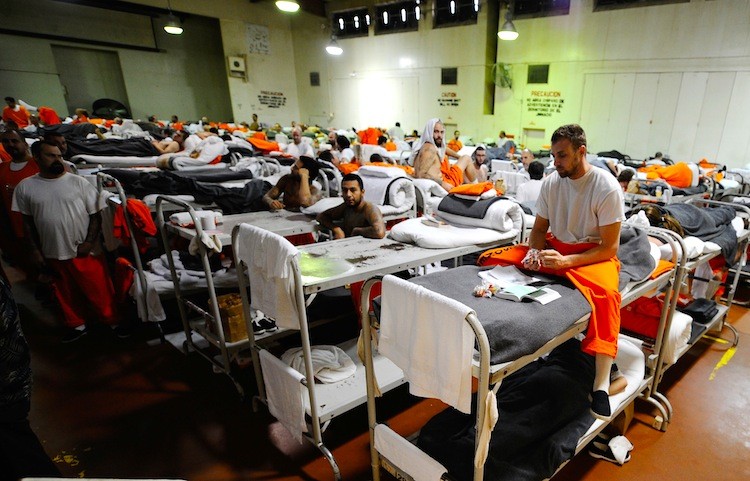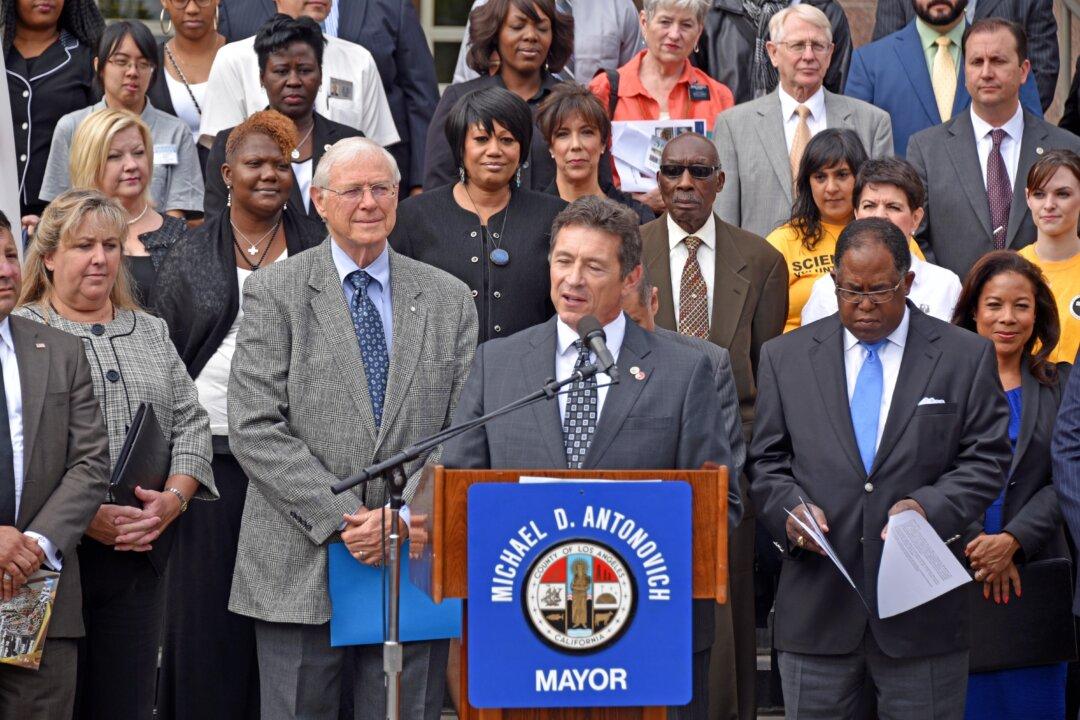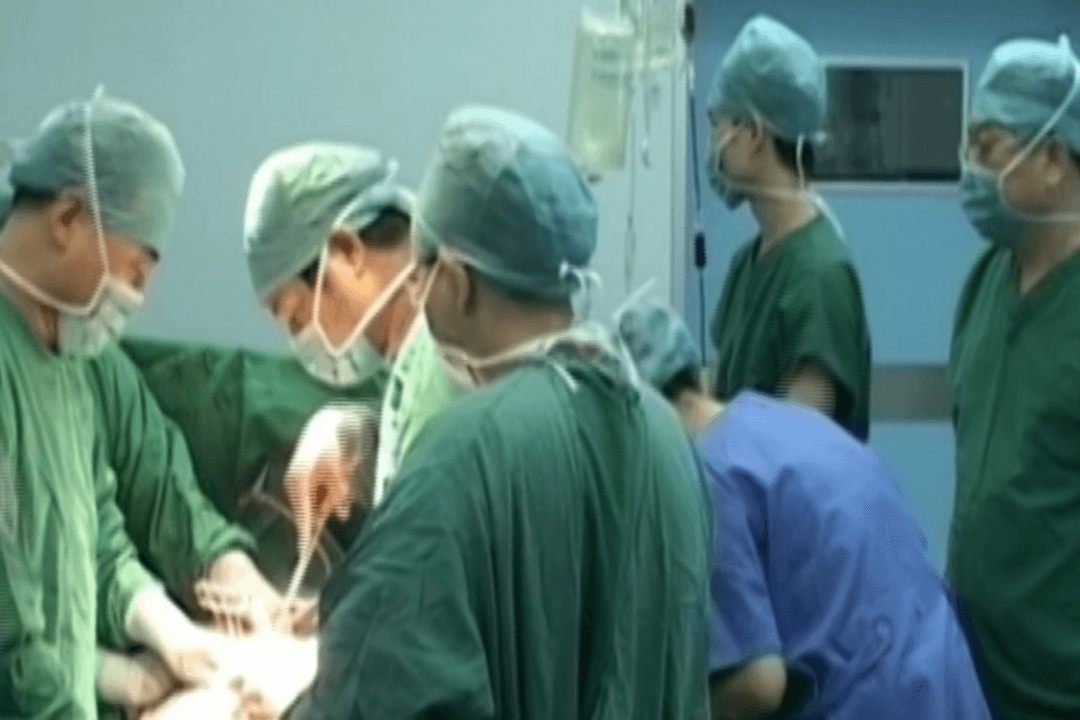California Misses Prison Deadline
The California Department of Corrections and Rehabilitation (CDCR) again failed to meet targets for reducing prisoner populations.

Inmates at Chino State Prison, which houses 5500 inmates, crowd around double and triple bunk beds at a gymnasium that was modified to house 213 prisoners on December 10, 2010 in Chino, California. Kevork Djansezian/Getty Images
|Updated:





